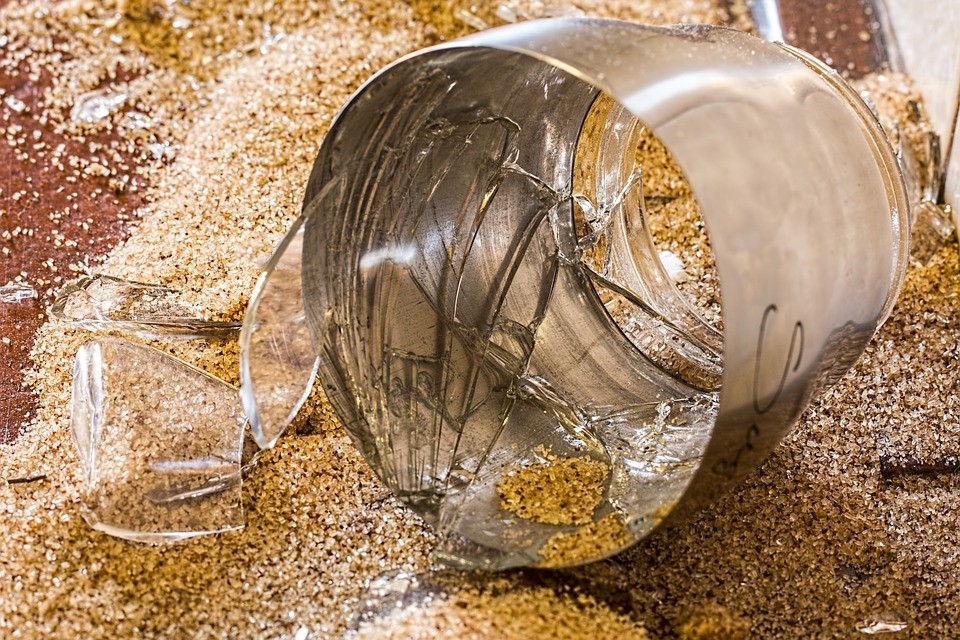
by Lucy | Feb 22, 2017 | Well Balanced Wisdom
We’ve been talking about whole grains this month and this is the last post in this series. If you missed the first 3 posts, you can read them here: Not all carbs are bad: whole grains and heart health part 1, You’ve been challenged | whole grains and heart health part 2, and 4 delicious swaps | whole grains and heart health part 3.
The food industry has definitely caught on to how awesome whole grains are for us and they aren’t shy about boasting the whole grains goodness in their products. The trouble is that between the marketing and super sizing we can be fooled into making the following mistakes.
Mistake #1: Being misled by the front of the box.
Quick story: I used to enjoy grocery shopping…finding all the new foods in the grocery store, leisurely reading labels and so forth. Then I had kids. Now grocery shopping is different. I get in and out as quick as I can. I still read all the labels but it’s more
exhausting than exciting. So, the other day I was grocery shopping with the kids and I picked up this spaghetti. We had already been in the store too long and the kids were getting really antsy so I didn’t have time to truly analyze it until I was home.
When something says 100% whole grain, that’s a good sign. But what I didn’t notice that day at the store was it said 100% durum wheat which is NOT the same as 100% whole wheat. Ugh. I got tricked! In the picture below you can see the difference, but unfortunately for me, I missed the one that said whole wheat until I went back to the store another time. This goes to show, you must have a keen eye for reading the food labels. Be careful not to get thrown off by things that appear to be something that they are not.
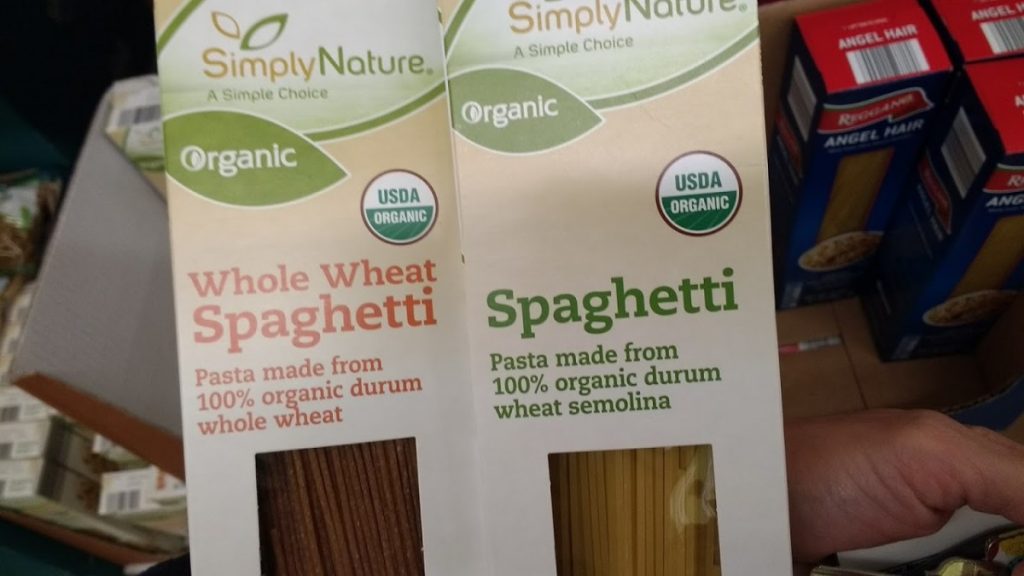
Mistake #2: Assuming all foods that contain whole grains are healthy.
According to Harvard’s Nutrition Source website, one study revealed that the whole grain stamp isn’t a good way to identify healthy whole grains.
 “The stamp, while designed to steer consumers towards healthy whole grains, actually identified products that were low in trans fats but higher in sugar and calories than whole grain foods without the stamp.“
“The stamp, while designed to steer consumers towards healthy whole grains, actually identified products that were low in trans fats but higher in sugar and calories than whole grain foods without the stamp.“
The FIX for the first two mistakes: First, we encourage you to embrace more natural whole grains. As for bread and packaged items, the ingredient list is the best place to gather your information, not the front of the package where marketers try to entice you with health claims or this fancy stamp. Look for whole grains that are high in fiber with few ingredients. The first ingredient should say “whole.” Ideally, the item should not have many added sugars.
(Mini commercial break: We help our clients do this kind of label reading at the store! Ask about our grocery store sessions.)
Mistake #3: Eating too much… because whole grains are good, right!?
Well, yes but size still matters. There is such thing as too much of a good thing. We all know that eating a ton of bread is not good for us, so this visual way of thinking about portion sizes can be really helpful. You wouldn’t eat more than 2 slices of bread at one meal, right?
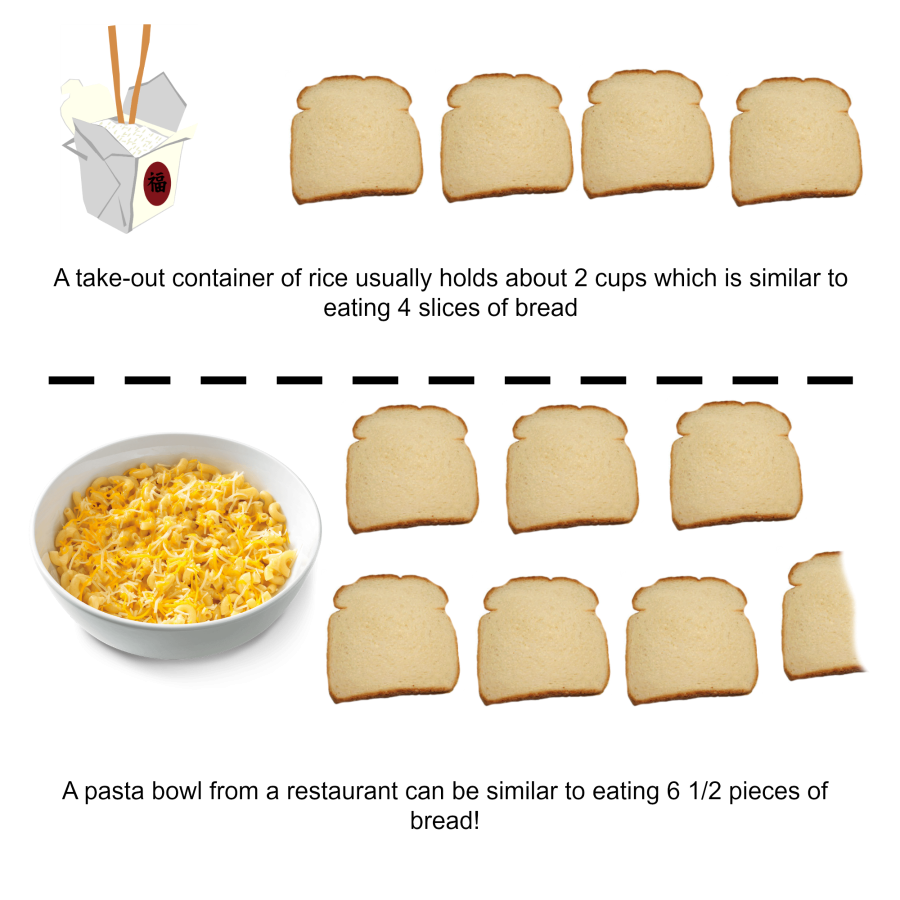
The FIX: Keep your portion sizes small with whole grains, 1/2 cup is usually plenty when it’s balanced out with other foods. Start small on your plate and always listen to your body. Let it tell you to get more or to stop eating.
FOOD FOR THOUGHT: Well-balanced eating can be tricky. We all make mistakes!
What was your biggest take-away or ah-ha from this whole grain series?
What is one thing you can apply to your life today?
Thanks for reading! If you enjoyed this, feel free to share with a friend!
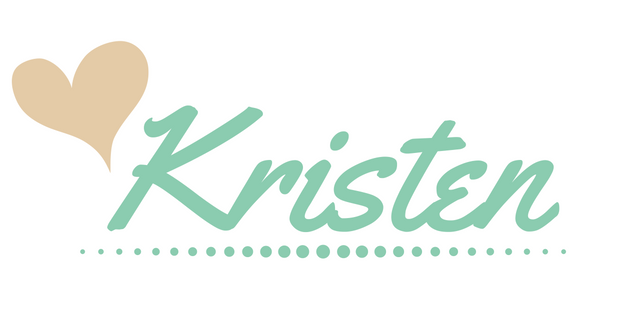

by Lucy | Feb 15, 2017 | Well Balanced Wisdom
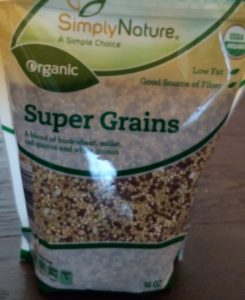
Every Wednesday this month we are talking about whole grains because of their connection to good heart health. If you missed the first two posts check them out: Not all carbs are bad: whole grains and heart health part 1 and You’ve been challenged | whole grains and heart health part 2. Today, I share 4 delicious whole grain swaps.
Last week, I didn’t just challenge you, I accepted the challenge myself. I was pumped when I found these Super Grains at Aldi! It is a mixture of millet, buckwheat and quinoa – all gluten-free whole grains. I’ve had quinoa but never millet or buckwheat. So, I tried them out! I simply prepared the grains as directed, then added them to stir-fried vegetables. Voila! Pretty tasty!
SWAP #1 Replace white rice with brown rice or a super grain blend. 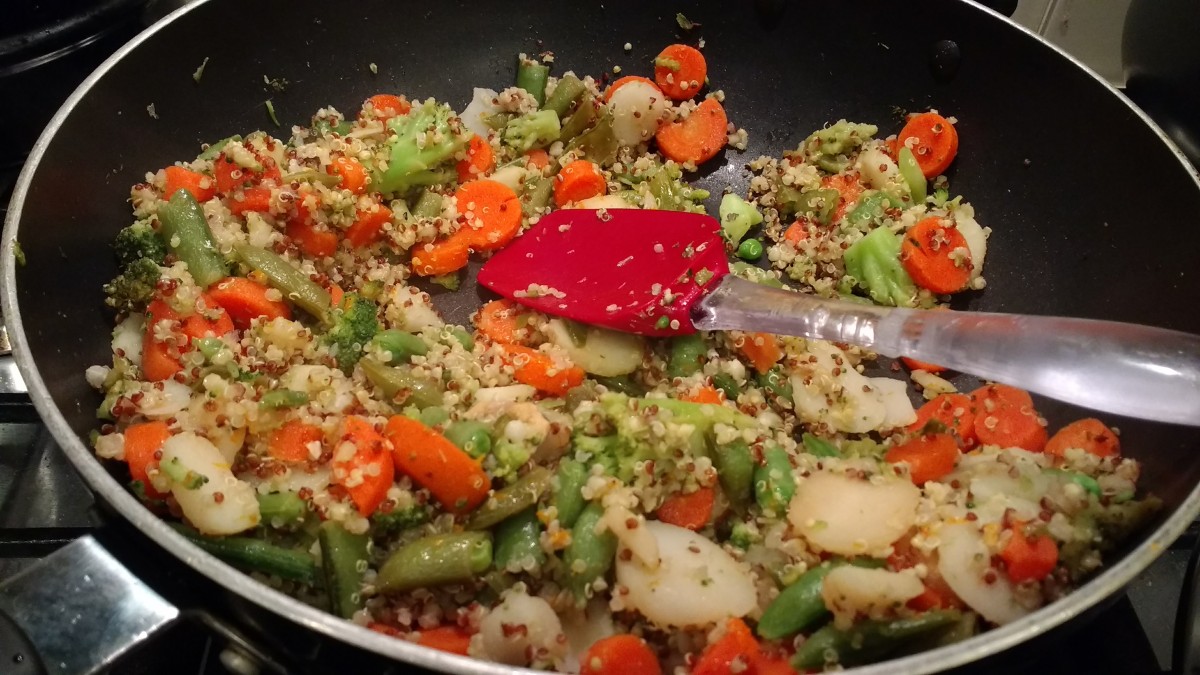
I also had the Super Grains for breakfast with some cinnamon, almond milk and maple syrup. It was delish!
How about you? Did you get a chance to try out a new whole grain? If you didn’t try something new, I hope you’ve checked out your local grocery store to at least see what is available. I know it’s not easy to incorporate something new into your diet. So, I wanted to highlight some more common options you can SWAP OUT.
That’s right. Take those refined grains and just swap them with nutrient-rich, heart-saving whole grains. These pictures prove just how delicious whole grains swaps can be.
At my house it’s pizza night every Friday. When we make our own at home we use a store bought whole wheat crust (and use lots of veggies).
SWAP #2 Buy or make a whole wheat pizza crust.

SWAP #3 Buy whole grain/whole wheat bread products. One day last week my husband made these delicious burgers and we ate them with whole wheat buns. They were as good as they look.
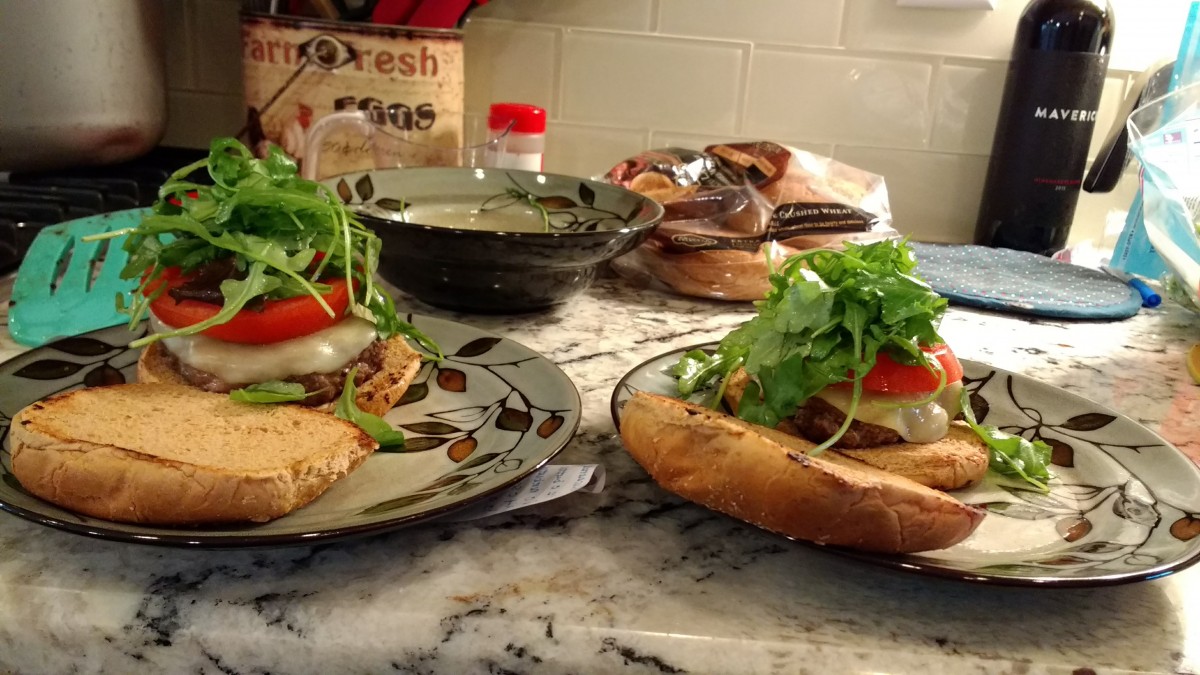 SWAP #4 Use whole wheat flour in place of white flour. I’ve been baking with whole wheat flour or whole white wheat flour for quite some time and I’ve never been disappointed. These are almond butter cookies made with whole wheat flour plus a little almond meal.
SWAP #4 Use whole wheat flour in place of white flour. I’ve been baking with whole wheat flour or whole white wheat flour for quite some time and I’ve never been disappointed. These are almond butter cookies made with whole wheat flour plus a little almond meal. 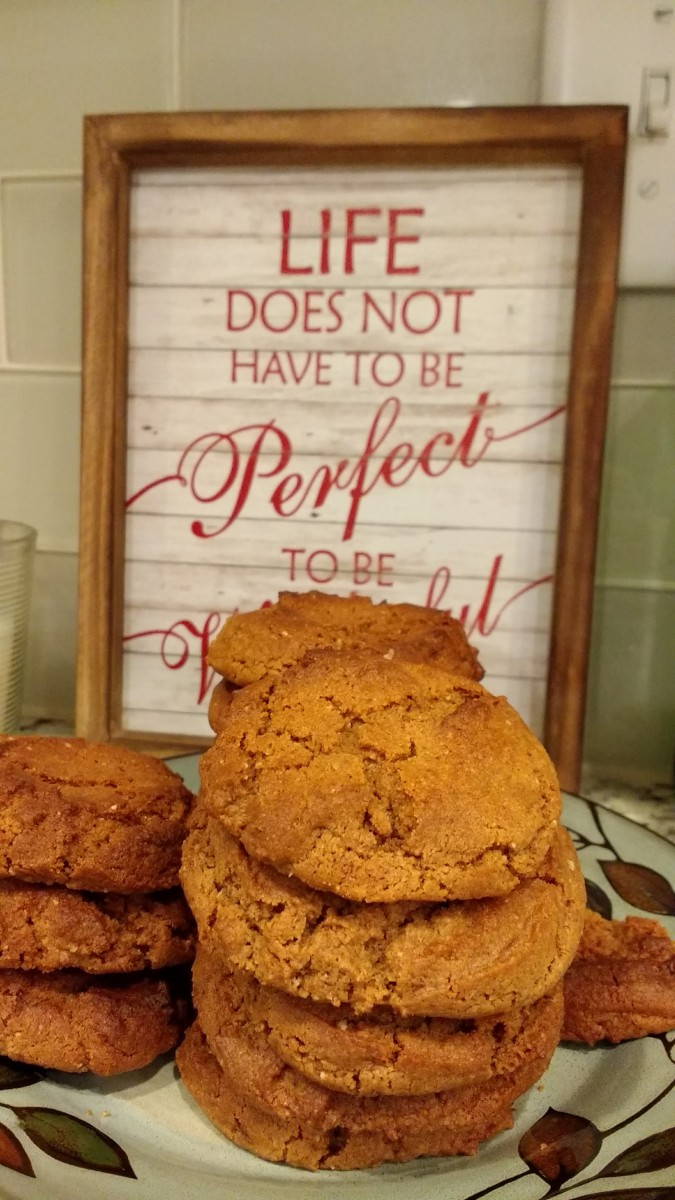
Stay tuned! Next week I’ll talk about how to truly tell what is a whole grain and what is not. It’s confusing sometimes. I’ll show you the item that completely tripped me up!

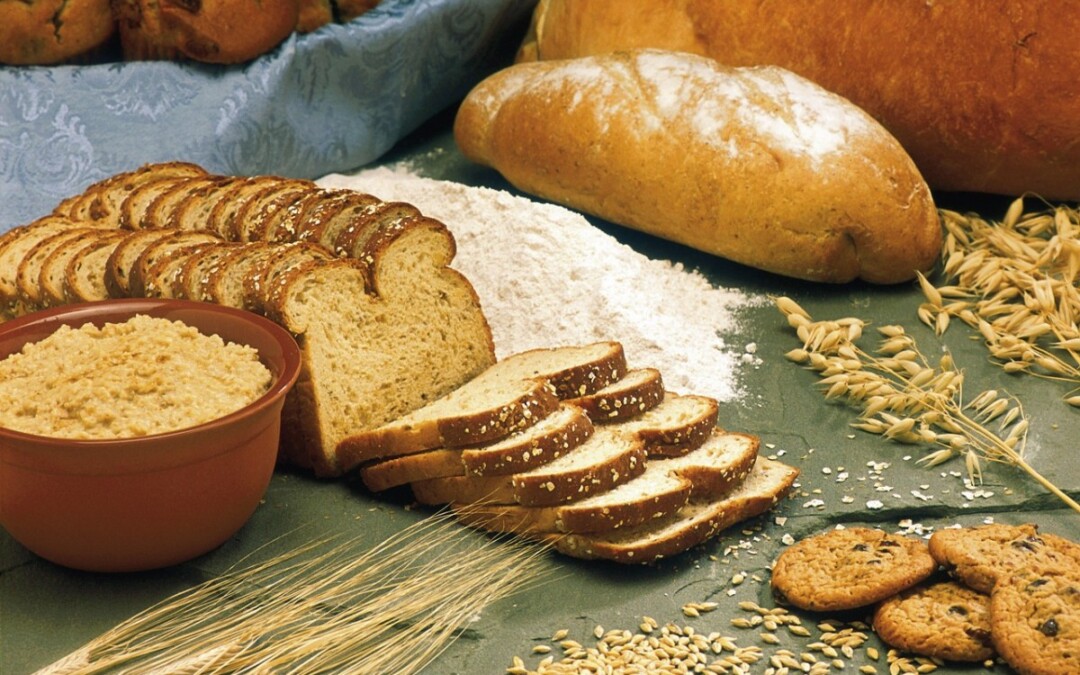
by Lucy | Feb 8, 2017 | Well Balanced Wisdom
In honor of Heart Health month, every Wednesday in February we are talking about whole grains because of their connection to good heart health. If you missed the first post do check out: Not all carbs are bad: whole grains and heart health part 1
Last week I challenged the notion that all carbs were bad and should be avoided. It is just not true. Whole grains have powerful health benefits and it is not just because of the fiber. They contain various phytochemicals that protect and fight against heart disease and diabetes.
There are many whole grain options to choose from. So, don’t limit yourself to whole wheat bread, crackers, and cereal. I CHALLENGE YOU to try something new and less processed. Pick any of the following grains to try this weekend. Notice there are 7 gluten-free whole grains below for those who need to avoid gluten for health reasons.
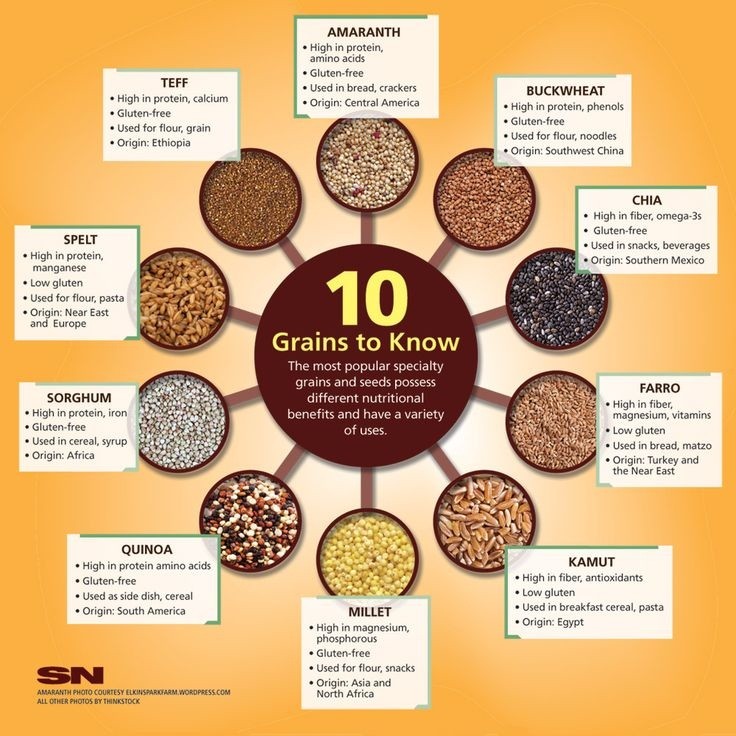
What do I eat it with? The easiest way, in my opinion, to start eating new whole grains is to prepare them plain and add then use them as a base for a salad or a “power bowl.” Start with a 1/2 cup to 1 cup of whole grains in a bowl and then top with your favorite veggies and protein. Lastly, drizzle with a dressing and voila! Simple and delish!
Here are 17 different ideas to get you thinking of the perfect combination for your taste buds.
Next step: post in the comments or send me an email ([email protected]) to let me know what you tried and how you like it!


by Lucy | Feb 1, 2017 | Nutrition Questions Answered, Well Balanced Wisdom
Carbs get a bad rap. Many people are eliminating them, assuming they might be intolerant to them or just plain writing them off as evil. Poor carbs, they are so misunderstood.
Carbs (short for carbohydrates) come from many sources both natural and processed, such as bread, rice, pasta, potatoes, peas, corn, fruit, sugar, honey, beans, etc, etc.
This month I want to highlight one group of nutritious, delicious “carbs” and shine light on how eating them can actually HELP us. Whole grains, like brown rice, oats, wheat, barley, and rye are good for your heart. Research indicates that eating whole instead of refined grains substantially lowers total cholesterol, low-density lipoprotein (LDL, or bad) cholesterol, triglycerides, and insulin levels.
So don’t write off all carbs. Whole grains are complex carbohydrates worth keeping (or adding) to your diet. This begins a 4 part series on whole grains in honor of Heart Health month. We will define them, give examples, talk about how much and why they are worth including in your diet. First, let’s define them..
What does whole grain really mean?
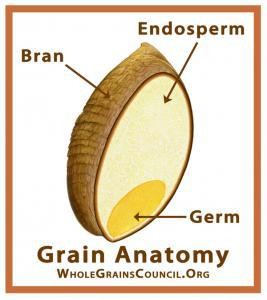 In their natural state growing in the fields, whole grains are the entire seed of a plant. This seed (also called a “kernel”) is made up of three key edible parts –the bran, the germ, and the endosperm. Whole grains that make it to the shelves or your plate still contain all three parts of the kernel. On the other hand, grains that have been refined in processing are missing the bran and the germ, leaving only the endosperm. Without the bran and germ, about 25% of a grain’s protein is lost, and are greatly reduced in at least seventeen key nutrients.
In their natural state growing in the fields, whole grains are the entire seed of a plant. This seed (also called a “kernel”) is made up of three key edible parts –the bran, the germ, and the endosperm. Whole grains that make it to the shelves or your plate still contain all three parts of the kernel. On the other hand, grains that have been refined in processing are missing the bran and the germ, leaving only the endosperm. Without the bran and germ, about 25% of a grain’s protein is lost, and are greatly reduced in at least seventeen key nutrients.
When you think of whole grains, the most popular ones might come to mind such as whole wheat bread, whole wheat pasta and brown rice. I challenge you to think beyond these staples, though. So many more whole grains are out there and available for your enjoyment. I’ll touch more on those next week….



 “The stamp, while designed to steer consumers towards healthy whole grains, actually identified products that were low in trans fats but higher in sugar and calories than whole grain foods without the stamp.“
“The stamp, while designed to steer consumers towards healthy whole grains, actually identified products that were low in trans fats but higher in sugar and calories than whole grain foods without the stamp.“

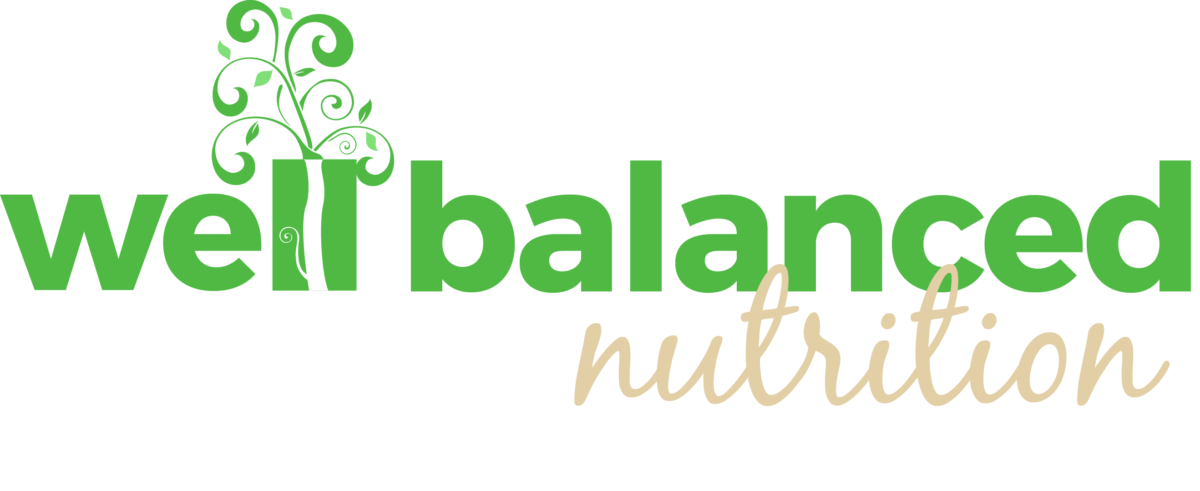




 SWAP #4 Use whole wheat flour in place of white flour. I’ve been baking with whole wheat flour or whole white wheat flour for quite some time and I’ve never been disappointed. These are almond butter cookies made with whole wheat flour plus a little almond meal.
SWAP #4 Use whole wheat flour in place of white flour. I’ve been baking with whole wheat flour or whole white wheat flour for quite some time and I’ve never been disappointed. These are almond butter cookies made with whole wheat flour plus a little almond meal. 



 In their natural state growing in the fields, whole grains are the entire seed of a plant. This seed (also called a “kernel”) is made up of three key edible parts –the bran, the germ, and the endosperm. Whole grains that make it to the shelves or your plate still contain all three parts of the kernel. On the other hand, grains that have been refined in processing are missing the bran and the germ, leaving only the endosperm. Without the bran and germ, about 25% of a grain’s protein is lost, and are greatly reduced in at least seventeen key nutrients.
In their natural state growing in the fields, whole grains are the entire seed of a plant. This seed (also called a “kernel”) is made up of three key edible parts –the bran, the germ, and the endosperm. Whole grains that make it to the shelves or your plate still contain all three parts of the kernel. On the other hand, grains that have been refined in processing are missing the bran and the germ, leaving only the endosperm. Without the bran and germ, about 25% of a grain’s protein is lost, and are greatly reduced in at least seventeen key nutrients.